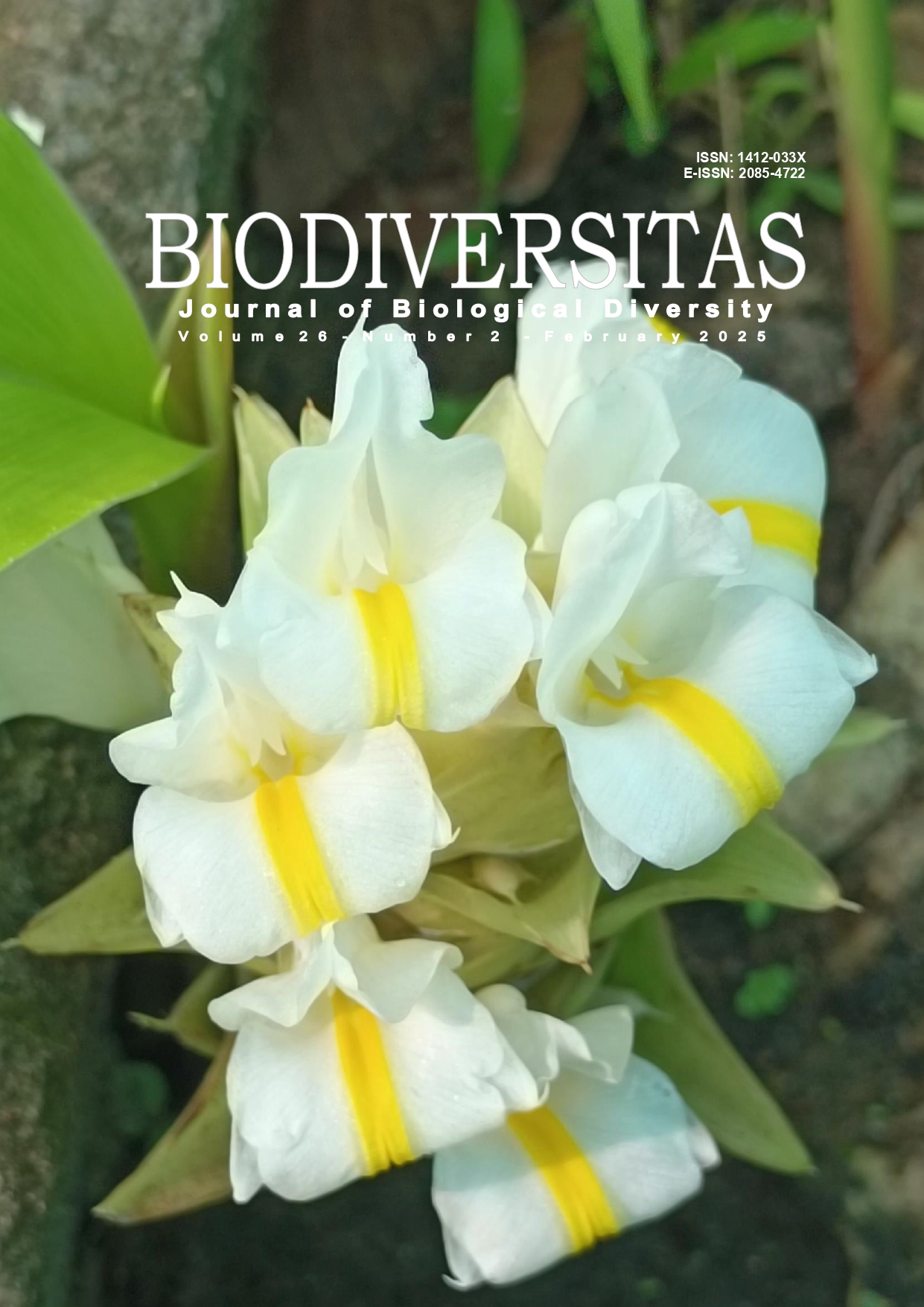Current status of long-tailed macaque (Macaca fascicularis) on small islands in the Southern Sumatra, Indonesia
##plugins.themes.bootstrap3.article.main##
Abstract
Abstract. Hasibuan MM, Tohir RK, Munawaroh K, Maryanto I, Maharadatunkamsi, Lubis AM, Rahmandani F, Irhamuddin, Sujadi, Gunarto E, Rafsanjani YH. 2025. Current status of long-tailed macaque (Macaca fascicularis) on small islands in the Southern Sumatra, Indonesia. Biodiversitas 26: 971-980. The global population status of the Long-Tailed Macaque (LTM/Macaca fascicularis) was recently reassessed, resulting in its reclassification from Vulnerable to Endangered due to an estimated population decline of approximately 40% over the past three generations. To better understand and validate its updated IUCN status, we conducted a population study on Tabuan, Legundi, and Umang-umang Islands in Lampung Province, located in the southern region of Sumatra, Indonesia. On the other hand, management challenges arise due to its current International Union for Conservation of Nature (IUCN) status, even though it is locally regarded as a pest by the local population. To establish effective and sustainable management strategies, updated population data is crucial, particularly in regions with limited information. This research aimed to address the need for population status data in Sumatra. As part of a broader study focusing on the distribution of M. fascicularis in Sumatra, this study specifically targets the understudied small islands located in the southern region of Sumatra Island. The research was conducted from April 25 to May 4, 2024, on three islands within Lampung Province: Tabuan, Legundi, and Umang-umang Islands. Data were collected using the transect method, covering a total distance of 43.42 km. The findings revealed an estimated total population of approximately 9,948 M. fascicularis individuals, distributed as follows: 6,523 on Tabuan Island, 3,415 on Legundi Island, and a single group of around 10 individuals on Umang-umang Island. These findings provide insights into previously underrecognized and underpublicized populations of LTM in Southern Sumatra, elucidate the potential for colonization of new territories by LTM on the surveyed islands, and underscore conflicts with local communities in specific areas. Therefore, it is imperative to intensify management efforts to improve habitat conditions, mitigate conflicts, and enhance the overall success of LTM conservation and management strategies.

